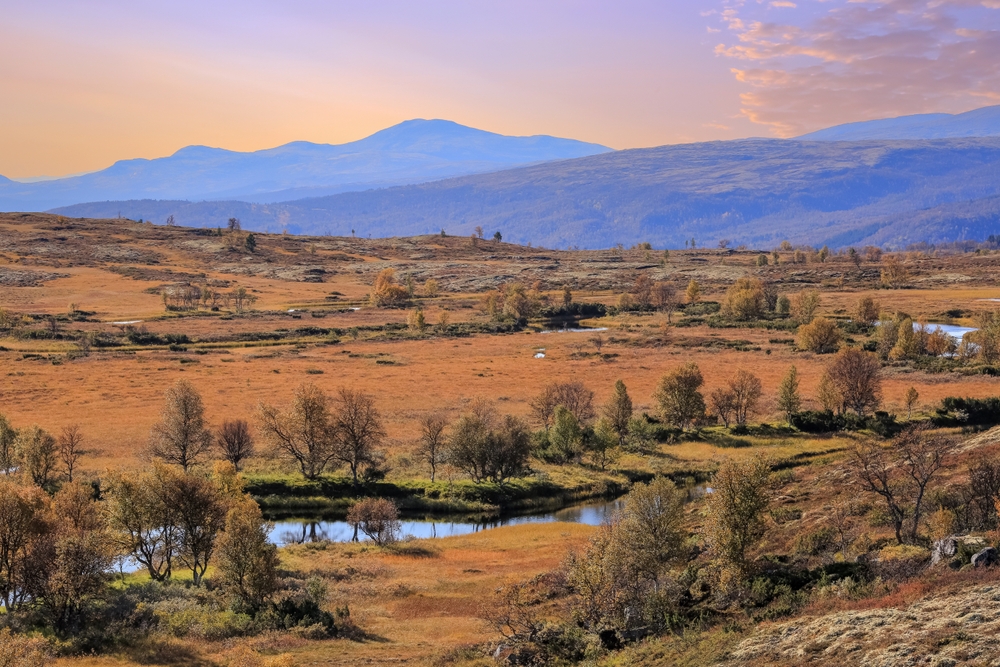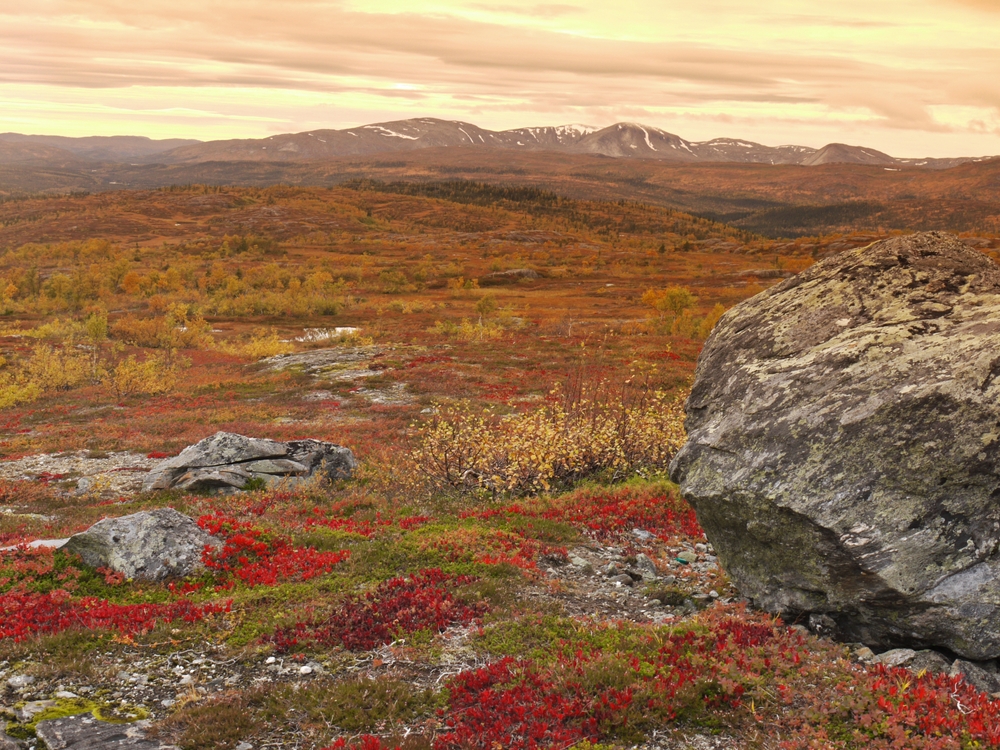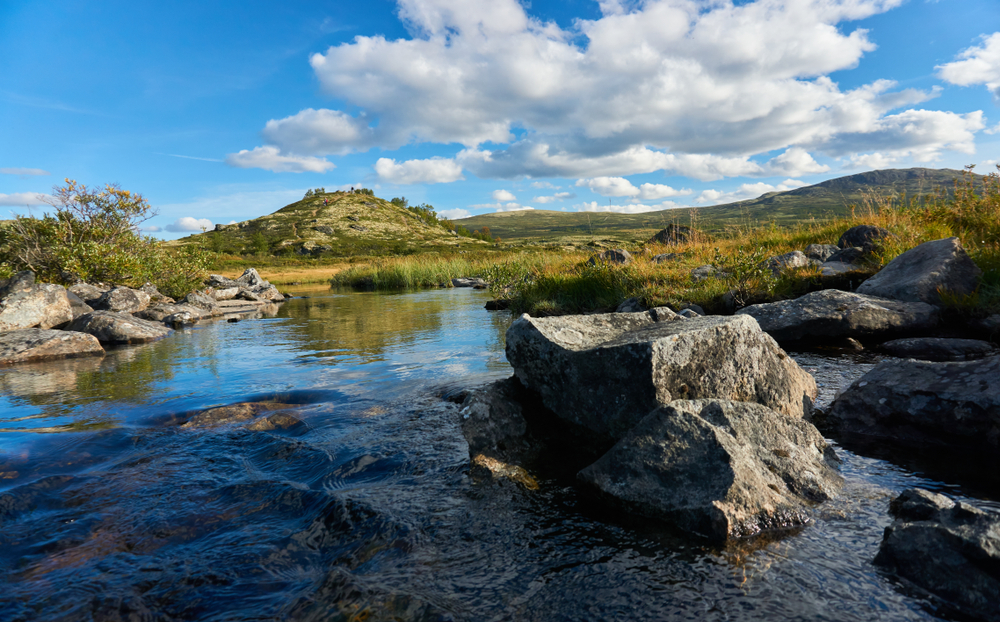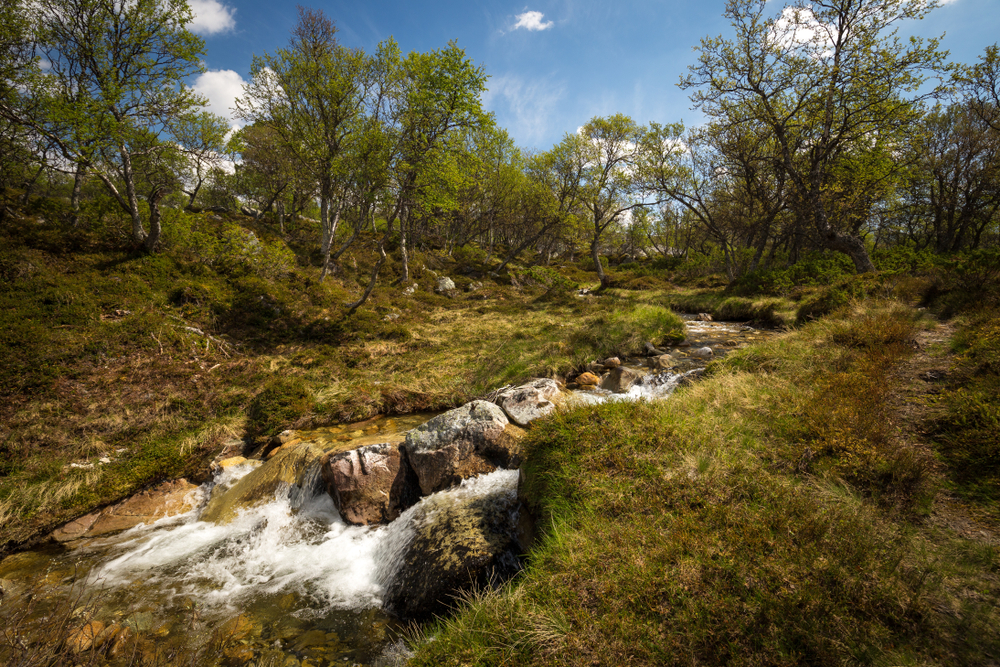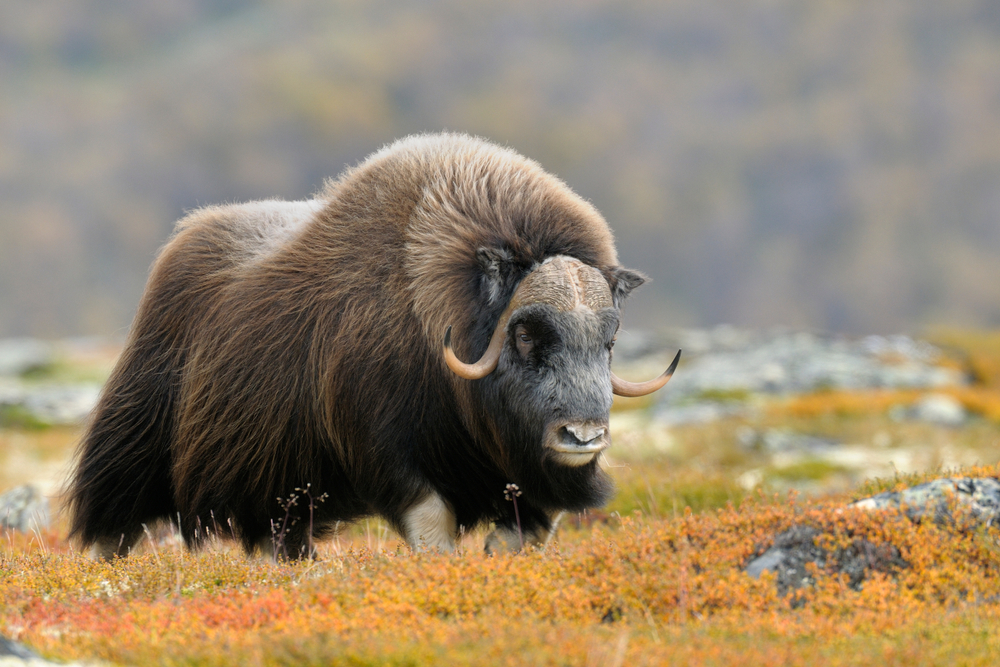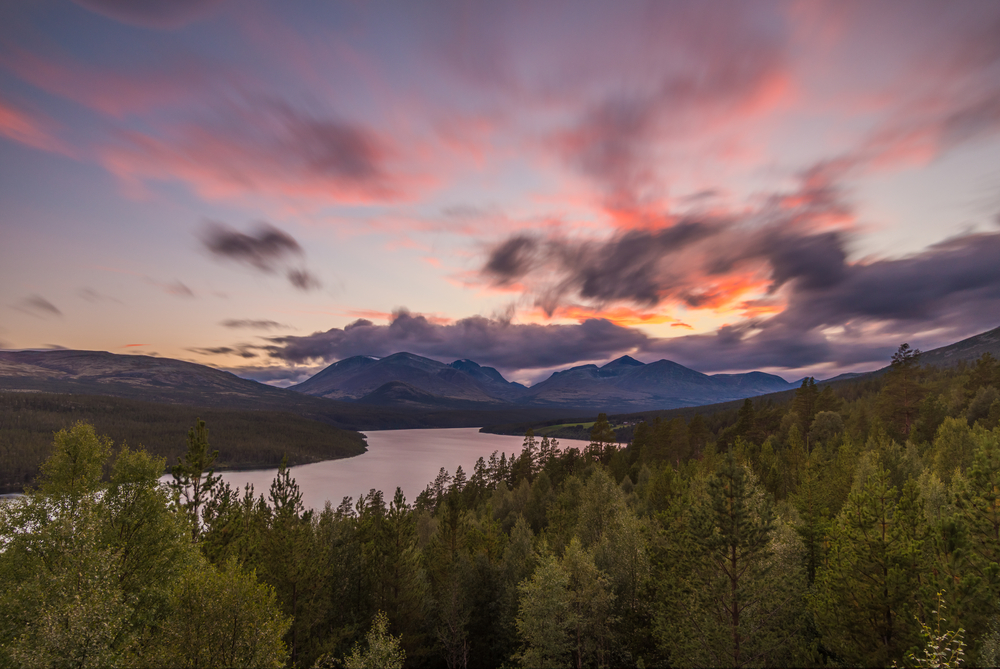Forollhogna Overview
Forollhogna National Park, known in Norwegian as Forollhogna nasjonalpark, is a stunning protected area spanning approximately 419 square miles (1,086 square kilometers) in central Norway.
Established in 2001, the park stretches across the counties of Trøndelag and Innlandet, encompassing parts of Holtålen, Midtre Gauldal, Røros, Rennebu, Tynset, and Tolga municipalities. This remote and relatively undisturbed landscape is characterized by rolling mountains, broad valleys, and rich grazing lands, making it an ideal habitat for diverse wildlife and a prime location for nature enthusiasts.
The terrain of Forollhogna National Park is dominated by gentle mountain slopes rather than the steep, rugged peaks found in many other Norwegian parks. The highest point, Forollhogna Mountain, stands at 1,332 meters (4,370 feet) above sea level, offering sweeping views of the surrounding wilderness.
The park’s valleys are dotted with rivers and lakes, while lush meadows provide rich pastureland that has supported traditional farming and grazing practices for centuries. Vegetation is varied, with alpine meadows, heathlands, and birch forests creating a picturesque mosaic across the landscape. The region is particularly known for its flourishing flora in the summer, with colorful wildflowers carpeting the valleys and hillsides.
Wildlife is abundant, and Forollhogna National Park is particularly famous for its thriving population of wild reindeer, considered one of the most robust and genetically pure herds in Norway. These reindeer, an iconic symbol of the Norwegian wilderness, roam freely across the park, and visitors may have the rare opportunity to witness them in their natural habitat.
Other notable mammals include moose, red foxes, wolverines, and lynx, all of which contribute to the park’s dynamic ecosystem. Birdwatchers will find a rich avian presence, including golden eagles, rough-legged buzzards, and a variety of owls and grouse species. The park’s wetlands also attract migratory birds, adding to the region’s biodiversity.
Visitors to Forollhogna National Park are drawn by its tranquil beauty and opportunities for outdoor adventure. The absence of major infrastructure makes it an excellent destination for those seeking solitude and immersion in nature. Hiking is a popular activity, with trails leading through open valleys and gently sloping hills, allowing for breathtaking views and close encounters with wildlife.
Fishing in the park’s rivers and lakes is another favored pastime, with opportunities to catch trout and Arctic char in pristine waters. During winter, the park transforms into a serene snow-covered landscape, ideal for cross-country skiing and snowshoeing. Traditional summer farms, known as seters, are scattered throughout the area, offering a glimpse into Norway’s pastoral heritage.
One of the key conservation challenges in Forollhogna National Park is balancing human activity with the protection of the wild reindeer population. These animals are highly sensitive to disturbances, particularly from hikers, skiers, and other outdoor enthusiasts. Efforts have been made to educate visitors on responsible wildlife observation practices and to designate specific areas for tourism while leaving core habitats undisturbed.
Conservation initiatives have also focused on preserving traditional land-use practices, which contribute to the park’s biodiversity. The success of these efforts is evident in the continued health of the reindeer population and the park’s thriving ecosystems, ensuring that this pristine wilderness remains a haven for both wildlife and visitors for generations to come.








































































